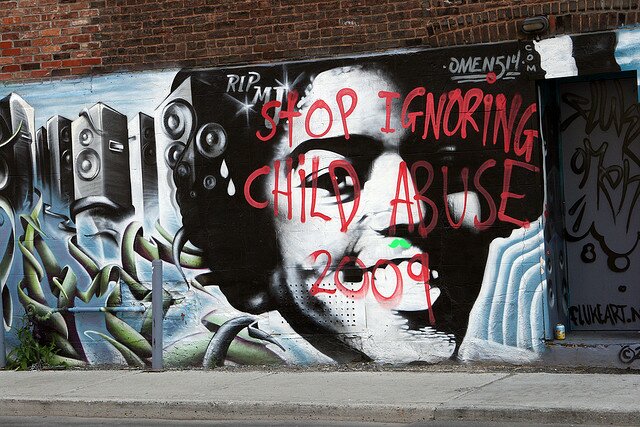Maria Anifowose,
Columnist (Our World)
The treatment of children as sexual objects and the production of erotic literature, movies and drawings involving children are illegal acts that trample upon the pride of childhood. Child pornography which refers to any visual depiction, including any photograph, film, writing or computer-generated image that portray children or minors engaging in sexually explicit activities, provides a platform upon which the dignity of a child is abused. It is, therefore, a menace that must be curbed in today’s society.
Child pornography has existed through the ages. During most of the 20th century, it was a restricted activity; images were usually locally produced, of poor quality, expensive and difficult to obtain. However, with the relaxation of censorship standards in the 1960s, there was an increase in the availability of child pornography, and, by 1977, some 250 child pornography magazines were circulating the United States, many imported from Europe. Also, the advent of the internet in the 1980s dramatically changed the scale and nature of child pornography, as it led to its proliferation and made vast quantities readily available in the privacy of the viewer’s home.
Child pornography is divided into simulated child pornography and pornography which was produced with direct involvement of the child (also known as child abuse images). Simulated child pornography is pornography that depicts minors and is produced without the direct involvement of children in the production process itself. It includes modified photographs of real children, non-minor teenagers made to look younger (age regression) and fully computer-generated imagery or adults made to look like children.
Child pornography brings along with it numerous detrimental effects upon both the children portrayed in it and upon the viewers. As regards the children portrayed, being the subject of child pornography can have devastating physical, social, and psychological effects on them. The children portrayed in child pornography are first victimised when their abuse is perpetrated and recorded. They are further victimised each time that record is accessed. In one study, 100 victims of child pornography were interviewed about the effects of their exploitation—at the time it occurred and in later years. Referring to when the abuse was taking place, victims described the physical pain (e.g., around the genitals), accompanying somatic symptoms (such as headaches, loss of appetite, and sleeplessness), and feelings of psychological distress (emotional isolation, anxiety, and fear). However, most of them also felt a pressure to cooperate with the offender and not to disclose the offence, both out of loyalty to the offender and a sense of shame about their own behaviour. Only five cases were ultimately reported to authorities. In later years, the victims reported that initial feelings of shame and anxiety did not fade but intensified to feelings of deep despair, worthlessness, and hopelessness. Their experience had provided them with a distorted model of sexuality, and many had particular difficulties in establishing and maintaining healthy emotional and sexual relationships.
Regarding the viewers (both children and adults), child pornography also has adverse effects on them. First, as a result of the corrosive effect that pornography has, the viewers of child pornography become increasingly interested in it, are attracted to images of increasing severity and become desensitized to the harms victims experience. The viewers of child pornography in the long term also stand the risk of indulging in sexual assaults, rape and child molestation. Also, as viewers succeed in acting out what they have seen in the pornographic depictions, they stand the risk of contracting Sexually Transmitted Diseases (STDs), having unplanned pregnancies (females) and becoming sex addicts. Apart from this, viewing of child pornography by children can shape the attitudes and values of children about love and sex in a very wrong way. Most caring, responsible parents want to instill in their children their own personal values about relationships, sex, intimacy, love, and marriage. Unfortunately, the powerful irresponsible messages of pornography may be educating these children on these very important life issues in a very inappropriate manner. Just as thirty-second commercials can influence whether or not we choose one popular soft drink over another, exposure to child pornography can communicate and imbibe erroneous values, beliefs and behaviors in children as regards sex.
Furthermore, exposure to child pornography interferes with a child’s development. During certain critical periods of childhood, a child’s brain is being programmed for sexual orientation. During this period, the mind appears to be developing a “hardwire” for what the person will be aroused by or attracted to. Exposure to healthy sexual norms and attitudes during this critical period can result in the child developing a healthy sexual orientation. In contrast, if there is exposure to pornography, of any kind, during this period, sexual deviance may become imprinted on the child’s “hard drive” and become a permanent part of his or her sexual orientation. The adverse effects of child pornography are very exhaustive and, indeed, very disadvantageous.
As a result of the deleterious impact of child pornography, it is highly critical for measures to be taken to curb it. Nowadays, many countries have enacted laws regarding the production and possession of child pornography. And many have established grievous consequences to be meted out on people that break this law. Above all, it is highly important for parents to recognize that the greatest preventive measure against child pornography lies in their hands. This is as a result of the fact that they have the responsibility of keeping close supervision on their children, so that they would not be victims or viewers of child pornography.
Image Courtesy: © Quinn Dombrowski | Flickr
Maria Anifowose
Latest posts by Maria Anifowose (see all)
- Mali Attack That Has Killed UN Peacekeepers - December 20, 2013
- Child Pornography: Behind Every Picture, There is Pain - October 28, 2013





No comments
Be the first one to leave a comment.